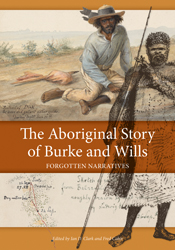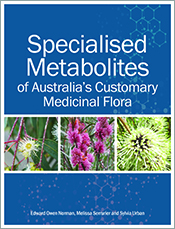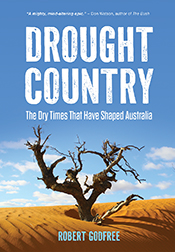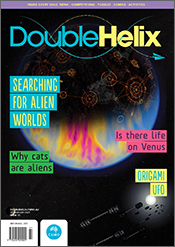The Aboriginal Story of Burke and Wills

Forgotten Narratives
Edited by: Ian D Clark, Fred CahirA study of Aboriginal cross-cultural exchanges with the Burke and Wills expedition of 1860-61.
The Aboriginal Story of Burke and Wills is the first major study of Aboriginal associations with the Burke and Wills expedition of 1860–61. A main theme of the book is the contrast between the skills, perceptions and knowledge of the Indigenous people and those of the new arrivals, and the extent to which this affected the outcome of the expedition. + Full description
The book offers a reinterpretation of the literature surrounding Burke and Wills, using official correspondence, expedition journals and diaries, visual art, and archaeological and linguistic research – and then complements this with references to Aboriginal oral histories and social memory. It highlights the interaction of expedition members with Aboriginal people and their subsequent contribution to Aboriginal studies. The book also considers contemporary and multi-disciplinary critiques that the expedition members were, on the whole, deficient in bush craft, especially in light of the expedition’s failure to use Aboriginal guides in any systematic way.
Generously illustrated with historical photographs and line drawings, The Aboriginal Story of Burke and Wills is an important resource for Indigenous people, Burke and Wills history enthusiasts and the wider community.
This book is the outcome of an Australian Research Council project.
Shortlisted for the 2014 NSW Premier's History Prize
Cultural sensitivity
Readers are warned that there may be words, descriptions and terms used or referenced in this book that are culturally sensitive, and which might not normally be used in certain public or community contexts. While this information may not reflect current understanding, it is provided by the author in a historical context.
News
This title is no longer available in print, but can still be purchased as an eBook.
Reviews
"There is so much detail in the Aboriginal contributions to the Burke and Wills journey that we can't ignore it any more."
Rob Harris, 'A bullet for Burke?', The Weekly Times, pp. 17-18, 21 Aug 2013
"this is a very important inclusion to the history of the VEE and to the renewed focus on exploration history more generally."
Tiffany Shellam, Aboriginal History, vol. 38, pp. 221-224, 2014
"The strength of the collection is its broad scope, and copious illustrations, not only contemporary images from the expedition but also recent photographs of the relevant environments. This makes it a rich resource for readers with broad interests, and its accessible narrative style... will be especially appreciated by students."
Shino Konishi, Australian Historical Studies, Vol 46(2), 2015, pp. 315-316
"Long overdue in bringing a historical realism to the Indigenous experience of the expedition, but also in bringing a sense of detail of the Burke and Wills journey itself."
Rachel Towns, Agora 54(2) 2019
Details
ePDF | April 2016ISBN: 9780643108097
Publisher: CSIRO Publishing
Available from eRetailers
ePUB | April 2016
ISBN: 9780643108103
Publisher: CSIRO Publishing
Available from eRetailers
Features
- Reveals for the first time Aboriginal associations with the Burke and Wills Expedition
- Aboriginal oral histories are presented and analysed
- Generously illustrated with historical photographs and line drawings
Contents
ForewordPeter Thorne
List of contributors
Acknowledgements
Introduction: a Yandruwandha perspective
Aaron Paterson
Responding to Yandruwandha: a contemporary Howitt’s experience
Richie Howitt
Chapter 1: The Aboriginal legacy of the Burke and Wills Expedition: an introduction
Ian D. Clark and Fred Cahir
Chapter 2: The members of the Victorian Exploring Expedition and their prior experience of Aboriginal peoples
Ian D. Clark
Chapter 3: 'Exploring is a killing game only to those who do not know anything about it': William Lockhart Morton and other contemporary views about the Victorian Exploring Expedition and its fate
Ian D. Clark
Chapter 4: The use and abuse of Aboriginal ecological knowledge
Philip A. Clarke
Chapter 5: The Aboriginal contribution to the expedition, observed through Germanic eyes
David Dodd
Appendix 5.1: Extracts from the 1861 Anniversary Address of the Royal Society of Victoria delivered by the President, His Excellency Sir Henry Barkly KCB on 8 April 1861
Appendix 5.2: English translation of Beckler H (1867) Corroberri: Ein Beitrag zur Kenntnis der Musik bei den australischen Ureinwohnern Globus 13, 82–84
Chapter 6: Language notes connected to the journey of the expedition as far as the Cooper
Luise Hercus
Chapter 7: Burke and Wills and the Aboriginal people of the Corner Country
Harry Allen
Chapter 8: 'Devil been walk about tonight – not devil belonging to blackfellow, but white man devil. Methink Burke and Wills cry out tonight "What for whitefellow not send horses and grub?"' An examination of Aboriginal oral traditions of colonial explorers
Fred Cahir
Chapter 9: How did Burke die?
Darrell Lewis
Chapter 10: Telling and retelling national narratives
Deirdre Slattery
Chapter 11: The influence of Aboriginal country on artist and naturalist Ludwig Becker of the Victorian Exploring Expedition: Mootwingee, 1860–61
Peta Jeffries
Chapter 12: If I belong here... how did that come to be?
Paul Lambeth
Chapter 13: Alfred Howitt and the erasure of Aboriginal history
Leigh Boucher
Chapter 14: Remembering Edwin J. Welch: surveyor to Howitt’s Contingent Exploration Party
Frank Leahy
Chapter 15: 'We have received news from the blacks': Aboriginal messengers and their reports of the Burke relief expedition (1861–62) led by John McKinlay
Fred Cahir
Chapter 16: William Landsborough’s expedition of 1862 from Carpentaria to Victoria in search of Burke and Wills: exploration with native police troopers and Aboriginal guides
Peta Jeffries
Chapter 17: 'I suppose this will end in our having to live like the blacks for a few months': reinterpreting the history of Burke and Wills
Ian D. Clark and Fred Cahir
Index
Authors
Ian D. Clark is Professor of Tourism in the Business School of the University of Ballarat. He has a PhD in Aboriginal historical geography from Monash University. His areas of interest include Victorian Aboriginal history, cultural heritage management, attractions management, Indigenous tourism, the history of tourism, and Victorian toponyms.Fred Cahir is a Senior Lecturer of Indigenous Studies in the School of Education and Arts at the University of Ballarat. He completed his PhD on the role of Aboriginal people on the Victorian goldfields at the University of Ballarat with Sovereign Hill Museums Association as his Industry Partner. His areas of interest include contact history, goldfields history, Indigenous tourism, and toponyms.
Contributors:
Harry Allen, Department of Anthropology, University of Auckland
Leigh Boucher, School of Modern History, Politics and International Relations, Macquarie University
Philip A. Clarke, Senior Research Fellow, Griffith University
David Dodd, Business School, University of Ballarat
Luise Hercus, School of Language Studies, Australian National University
Richie Howitt, Department of Environment and Geography, Macquarie University
Peta Jeffries, Business School, University of Ballarat
Paul Lambeth, School of Education and Arts, University of Ballarat
Frank Leahy, School of Engineering, University of Melbourne
Darrell Lewis, Centre for Historical Research, National Museum of Australia
Aaron Paterson, Yandruwandha descendant and Aboriginal & Torres Strait Islander Legal Service (Qld) Ltd
Deirdre Slattery, Faculty of Education – Outdoor and Environmental Education, La Trobe University
Peter Thorne, The Royal Society of Victoria








